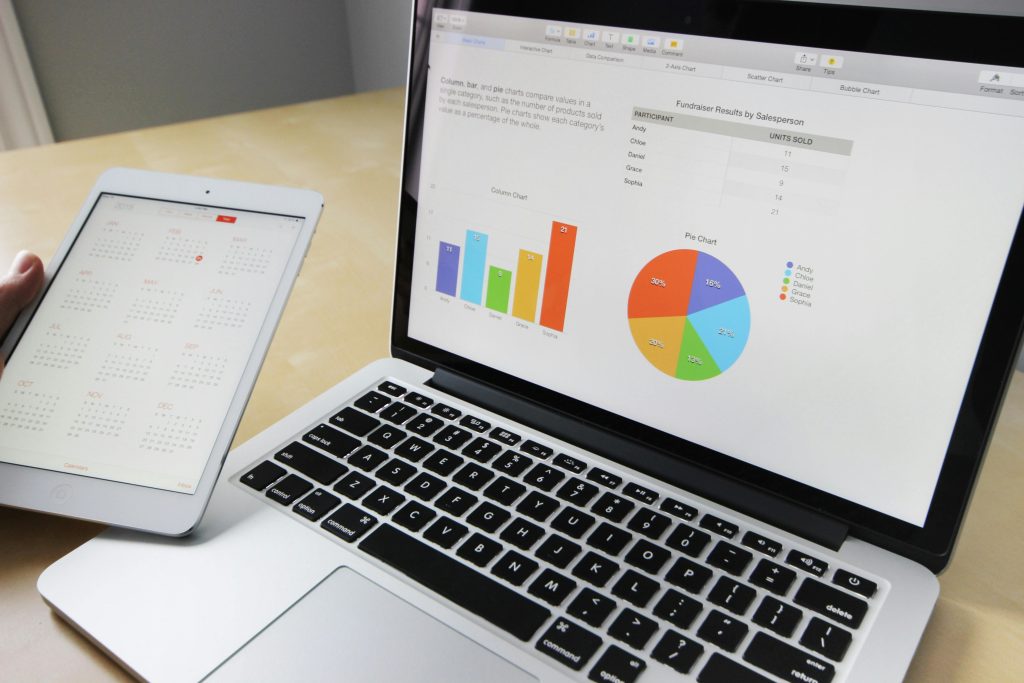In the rapidly evolving business world, data has become the currency of the digital age. Market research analysts stand at the forefront, transforming raw data into strategic insights that drive business decisions. As organizations strive to maintain competitiveness and relevance, the demand for skilled market research analysts has surged. This article delves into the multifaceted roles and responsibilities of market research analysts, highlighting the latest trends, challenges, and opportunities in the field. By examining real-world examples and expert insights, we aim to provide a thorough understanding of how these professionals contribute to a company’s success.

In an era where information is abundant and consumer preferences shift rapidly, businesses must navigate a complex landscape of market variables. Market research analysts are the detectives of the business world, uncovering patterns and trends that are not immediately apparent. They play a pivotal role in helping companies understand not just what is happening in the market, but why it is happening, and what is likely to happen next. Their analytical prowess allows businesses to anticipate changes, adapt strategies, and make data-driven decisions that can lead to a competitive advantage.
The Core Responsibilities of a Market Research Analyst
Data Collection and Analysis
At the heart of a market research analyst’s role lies the collection and analysis of data. Analysts employ various methodologies, including surveys, focus groups, and data mining, to gather relevant information about consumer behaviors, market trends, and competitive positioning. Once collected, this data is meticulously analyzed to uncover patterns, correlations, and insights that can guide business strategy.
Effective data collection requires a deep understanding of research design and methodology. Analysts must determine the most appropriate techniques for gathering data, whether it’s qualitative methods like in-depth interviews and ethnographies or quantitative approaches like structured questionnaires and statistical sampling. They must also be adept at leveraging technology for data collection, utilizing online platforms for surveys, and employing software tools for data mining.
The analysis phase involves cleaning and preparing data to ensure accuracy. Analysts use statistical tools and software, such as SPSS, R, or Python, to perform complex analyses like regression, factor analysis, and segmentation. They interpret the results in the context of the business problem, translating numbers into narratives that stakeholders can understand. The ability to communicate findings effectively is as important as the technical analysis itself.
Market Forecasting
Predicting market trends and consumer behaviors is a fundamental responsibility of a market research analyst. By leveraging statistical tools and models, analysts forecast sales trends and assess the potential demand for new or existing products. Market forecasting is crucial for organizations to make informed decisions about product development, pricing strategies, and expansion plans.
Market forecasting combines historical data with predictive analytics to anticipate future market dynamics. Analysts may use time-series models, econometric models, or machine learning algorithms to forecast demand. They must consider macroeconomic indicators, seasonal variations, and competitive activities. Sensitivity analysis may be conducted to understand how changes in key variables affect outcomes.
Furthermore, scenario planning is often used to prepare for various market conditions. By presenting different forecast scenarios, analysts help businesses understand the potential risks and opportunities associated with each course of action. This foresight is invaluable for strategic planning, budgeting, and risk management.
Competitive Analysis
Understanding the competitive landscape is vital for any business aiming for market leadership. Market research analysts evaluate competitor strategies, product offerings, and market positioning to identify strengths and weaknesses. This analysis helps organizations refine their competitive strategies and identify opportunities for differentiation.

Competitive analysis involves gathering intelligence on direct and indirect competitors. Analysts monitor competitors’ marketing campaigns, product launches, pricing changes, and customer reviews. Tools like SWOT analysis (Strengths, Weaknesses, Opportunities, Threats) and Porter’s Five Forces are employed to assess the competitive environment.
Analysts also pay attention to market share data, distribution channels, and technological advancements within the industry. By identifying gaps in the market, analysts can recommend strategic moves such as entering new segments, enhancing product features, or adopting new technologies. Keeping abreast of competitors’ activities enables businesses to respond proactively rather than reactively.
Consumer Insight Generation
Transforming data into actionable insights about consumer preferences and behaviors is a key deliverable for market research analysts. By identifying target demographics, purchasing patterns, and consumer sentiments, analysts provide organizations with a deeper understanding of their customers, facilitating targeted marketing campaigns and product innovations.
Developing consumer insights requires a blend of analytical skills and psychological understanding. Analysts create customer profiles and buyer personas that represent different segments of the market. They analyze customer journey maps to understand how consumers interact with the brand across various touchpoints.
Advanced techniques like psychographic profiling and behavioral analytics are used to delve into consumers’ values, attitudes, and lifestyle choices. By understanding not just what consumers do, but why they do it, businesses can craft messages and develop products that resonate on a deeper level. Personalization strategies, loyalty programs, and customer experience enhancements are all informed by these valuable insights.
Emerging Trends and Technologies in Market Research
Big Data and Analytics
The advent of big data has revolutionized market research. Analysts now have access to vast amounts of data from multiple sources, including social media, e-commerce platforms, and mobile applications. Advanced analytics tools enable analysts to process and analyze this data efficiently, uncovering insights that were previously unattainable.
Big data analytics involves handling datasets that are too large or complex for traditional data-processing techniques. Analysts use Hadoop, Spark, and other big data frameworks to manage and analyze these vast datasets. Predictive analytics and data mining techniques are applied to discover hidden patterns and correlations.
The use of big data allows for real-time analytics, enabling businesses to react swiftly to market changes. For example, by analyzing social media trends, companies can gauge consumer sentiment almost instantaneously. This immediacy provides a significant competitive advantage in fast-paced industries.
Artificial Intelligence and Machine Learning
AI and machine learning have made significant inroads into market research, offering innovative solutions for data analysis and prediction. These technologies automate routine tasks, enhance data accuracy, and provide deeper insights through advanced algorithms. For instance, sentiment analysis powered by AI can swiftly gauge consumer opinions from social media platforms, offering real-time insights.
Machine learning algorithms can handle complex, nonlinear relationships within data. Techniques such as clustering, decision trees, and neural networks allow for sophisticated data modeling. These methods enable analysts to segment markets more precisely and predict consumer behavior with greater accuracy.
AI-powered tools can automate data collection and cleansing, reducing manual effort and minimizing errors. Natural Language Processing (NLP) enables the analysis of unstructured data, such as customer reviews and open-ended survey responses. As AI technology continues to evolve, its applications in market research will expand, offering even more powerful tools for data-driven decision-making.
Ethnographic and Behavioral Research
Traditional research methods are being complemented by ethnographic and behavioral research techniques. By observing consumers in their natural environments and analyzing their interactions with products, analysts gain rich insights into consumer motivations and pain points. This qualitative approach provides context that quantitative data often lacks.
Ethnographic research requires analysts to immerse themselves in the consumer’s world. This may involve observing shoppers in retail environments, interacting with customers during product usage, or even living with consumers to experience their day-to-day behaviors. Such methods uncover tacit knowledge and unarticulated needs that surveys alone might miss.
Behavioral economics principles are also applied to understand how cognitive biases and heuristics influence decision-making. Techniques like A/B testing and eye-tracking studies provide empirical evidence of consumer responses to different stimuli. By integrating these qualitative insights with quantitative data, businesses can develop products and services that better meet consumer needs.
Key Challenges Faced by Market Research Analysts
Data Privacy and Ethics
With the increasing amount of data being collected, concerns about data privacy and ethical considerations have become paramount. Analysts must navigate stringent data protection regulations such as GDPR and CCPA, ensuring that data collection and analysis practices are both legal and ethical.
Ethical considerations extend beyond legal compliance. Analysts have a responsibility to protect participant confidentiality and avoid misuse of data. They must obtain informed consent, clearly explaining how data will be used and stored. Anonymizing data is crucial to prevent personal identification.
Ethical dilemmas may arise when balancing business interests with consumer rights. For example, while detailed consumer profiles can enhance personalization, they may also infringe on privacy. Analysts must advocate for ethical standards within their organizations, promoting transparency and integrity in all research activities.
Data Overload
The sheer volume of data available can be overwhelming, making it difficult to extract meaningful insights. Analysts must employ sophisticated data management tools and techniques to filter out noise and focus on relevant information that can drive decision-making.
Data overload can lead to analysis paralysis, where too much information hampers effective decision-making. To combat this, analysts prioritize data based on relevance and quality. Data visualization tools like dashboards help in summarizing key metrics and spotting trends.
Implementing data governance policies ensures that data is accurate, consistent, and reliable. Analysts also need to be aware of biases that can arise from skewed data and take steps to mitigate them. Effective data management is essential to harness the power of big data without becoming overwhelmed.

Integration of Diverse Data Sources
Combining data from multiple sources remains a complex challenge. Different data formats, systems, and standards require analysts to develop seamless integration strategies that allow for a comprehensive analysis. This integration is critical for obtaining a holistic view of market dynamics.
Integrating data from CRM systems, social media platforms, web analytics, and third-party providers requires robust data integration solutions. Analysts use ETL (Extract, Transform, Load) processes to consolidate data from disparate sources into a unified database or data warehouse.
Challenges include dealing with inconsistent data formats, duplicate records, and varying data quality. Data integration platforms and middleware solutions can automate much of this process. Ensuring interoperability between systems and maintaining data integrity throughout integration are key responsibilities for analysts.
Opportunities and Future Projections for Market Research Analysts
Increased Demand Across Industries
As more industries recognize the value of data-driven insights, the demand for skilled market research analysts is expected to grow. Beyond traditional sectors like retail and consumer goods, industries such as healthcare, finance, and technology are increasingly relying on market research to inform their strategic initiatives.
In healthcare, for instance, market research supports patient-centered care models by understanding patient experiences and outcomes. Pharmaceutical companies rely on market research to gauge the potential success of new drugs. In finance, market analysts assess consumer confidence, investment trends, and economic indicators to guide financial strategies.
Emerging industries like renewable energy and e-commerce are also creating new opportunities for market research professionals. As globalization expands market boundaries, analysts with expertise in international markets and cross-cultural research become invaluable. The diversification of industries utilizing market research underscores the field’s growing importance.
Personalization and Customer Experience
Personalization is becoming a key differentiator for businesses, and market research analysts play a crucial role in delivering personalized customer experiences. By understanding individual preferences and behaviors, companies can tailor their offerings to meet the unique needs of their customers, fostering brand loyalty.
Analysts help develop personalization strategies by analyzing customer data to identify preferences, purchase history, and engagement levels. Dynamic personalization, where content and recommendations are adjusted in real-time, relies heavily on data-driven insights.
The focus on customer experience (CX) extends beyond products to include every interaction a customer has with a brand. Analysts measure CX metrics like Net Promoter Score (NPS), Customer Satisfaction (CSAT), and Customer Effort Score (CES). By identifying pain points in the customer journey, businesses can improve service delivery and enhance overall satisfaction.

Sustainable Business Practices
Sustainability is a growing concern for both consumers and businesses. Market research analysts are increasingly tasked with evaluating the sustainability practices of organizations and assessing consumer attitudes towards green initiatives. Insights from such research help companies align their strategies with consumer expectations for corporate responsibility.
Environmental, Social, and Governance (ESG) factors are becoming integral to market research. Analysts assess the impact of sustainability initiatives on brand perception, customer loyalty, and market share. They may analyze consumer willingness to pay a premium for sustainable products or the effectiveness of corporate social responsibility (CSR) campaigns.
By providing data on environmental trends and consumer expectations, analysts enable businesses to make informed decisions about sustainability investments. This not only benefits the environment but also enhances brand reputation and can lead to financial gains through increased efficiency and market differentiation.
Case Studies: Real-World Applications of Market Research
Case Study 1: Procter & Gamble’s Innovation Strategy
Procter & Gamble (P&G) is renowned for its commitment to innovation, a strategy grounded in robust market research. The company leverages consumer insights to develop products that address emerging needs. For example, P&G’s research identified a growing consumer preference for environmentally friendly products, prompting the development of the ‘Tide Eco-Box,’ a more sustainable packaging option for its popular laundry detergent.
P&G’s approach involved extensive qualitative and quantitative research. They conducted focus groups to understand consumer attitudes toward packaging and environmental impact. Surveys provided quantitative data on the importance of sustainability in purchasing decisions.
The Tide Eco-Box not only reduces packaging material but also lowers transportation emissions due to its compact size. Market research helped P&G position the product effectively, highlighting the convenience and environmental benefits. The success of this initiative demonstrates how market research can drive innovation that aligns with consumer values and market trends.
Case Study 2: Starbucks’ Customer Insight-Driven Expansion
Starbucks utilizes market research to inform its expansion strategy and enhance customer experience. By analyzing customer feedback and purchasing patterns, Starbucks identifies locations for new stores and continues to refine its product offerings. The company’s success in the Chinese market is a testament to its adept use of market research to adapt to local consumer preferences.
In entering the Chinese market, Starbucks recognized the importance of tea in local culture. Market research revealed a preference for tea-based beverages and communal spaces. In response, Starbucks introduced tea-infused drinks and designed stores with larger seating areas to accommodate group gatherings.
Furthermore, Starbucks leveraged digital platforms popular in China, such as WeChat, for marketing and customer engagement. By customizing its offerings and marketing strategies based on market research, Starbucks was able to build a strong brand presence and achieve significant growth in a competitive market.
Actionable Strategies for Utilizing Market Research Insights
Building a Data-Driven Culture
Organizations should foster a data-driven culture by integrating market research insights into their strategic planning processes. This involves training employees to understand and leverage data, encouraging cross-departmental collaboration, and ensuring that insights inform decision-making at all levels.
Creating a data-driven culture starts with leadership endorsement. Executives should champion the use of data in decision-making and allocate resources toward analytics capabilities. Training programs can improve data literacy across the organization, enabling employees to interpret and utilize market research findings effectively.
Collaboration between departments, such as marketing, sales, product development, and customer service, ensures that insights are shared and acted upon. Regular meetings to discuss market research results and their implications can foster a collective understanding and drive coordinated action.
Investment in Technology
Investing in the latest technology and analytics tools is essential for maximizing the potential of market research. Organizations should evaluate and implement tools that enhance data collection, analysis, and visualization, empowering analysts to deliver more precise and impactful insights.
Technological investments may include advanced analytics platforms, customer data platforms (CDPs), and artificial intelligence applications. These tools can automate processes, improve data accuracy, and provide deeper analytical capabilities.
Adopting cloud-based solutions can offer scalability and flexibility, allowing organizations to handle increasing data volumes and adapt to changing needs. Integration of these technologies should be planned carefully to ensure compatibility with existing systems and alignment with organizational goals.
Continuous Learning and Adaptation
The business environment is continuously evolving, and organizations must remain agile. Encouraging a culture of continuous learning and adaptation allows businesses to stay ahead of market trends. Analysts should be given opportunities for professional development to stay updated with the latest techniques and methodologies in market research.
Organizations can support professional development through training programs, workshops, and conferences. Encouraging participation in industry associations and certification programs can also enhance analysts’ skills.
Staying abreast of emerging trends, such as advancements in AI or changes in consumer behavior, enables analysts to apply cutting-edge techniques and provide up-to-date insights. An environment that values innovation and experimentation can lead to the adoption of best practices and improved performance.

Conclusion
The role of a market research analyst is critical in shaping a company’s strategy and ensuring its long-term success. By staying abreast of emerging trends and technologies, tackling challenges head-on, and leveraging actionable insights, market research analysts provide companies with the knowledge they need to thrive in a competitive marketplace. As the importance of data-driven decision-making continues to grow across industries, the expertise of market research analysts will be more crucial than ever in navigating the complexities of the modern business landscape.
Market research analysts act as the navigators for businesses in an ocean of data. Their ability to interpret and translate data into strategic initiatives is indispensable. As markets become more saturated and consumers more discerning, the insights provided by these professionals will determine which companies rise above the rest.
Embracing the advancements in technology and methodology, while adhering to ethical standards, will enhance the effectiveness of market research. Organizations that invest in their analysts and prioritize data-driven strategies are more likely to achieve sustained growth and success. The future belongs to those who understand the power of knowledge and utilize it to innovate and adapt.




